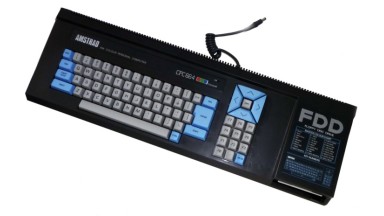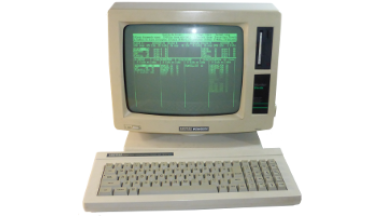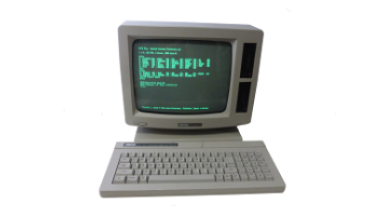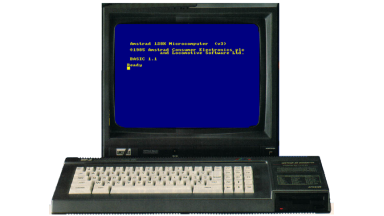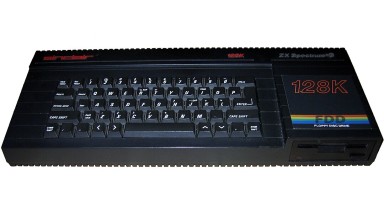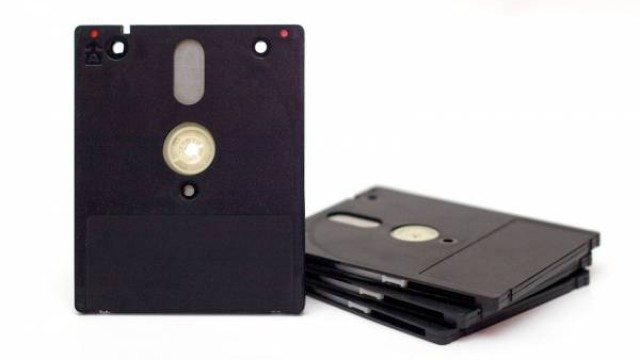
Diskette 3"
Company: Hitachi
Launched: 1982
Capacity: 360 KiB (doble cara)
This format was one of many that appeared in the 1980s from different manufacturers and never caught on.
However, Amstrad adopted it for its personal computers, rumored to be able to get its readers at a bargain price.
This Hitachi creation was intended to rival the 3.5-inch floppy disks created by Sony and supported by a consortium of manufacturers led by Matsushita. It would eventually become the standard disk drive after Apple included them in its Macintosh computers in 1984 and IBM chose them for its PS/2 PC in 1987.
Alan Sugar signed an agreement with 3-inch disk drive manufacturers to sell them drives at a fixed percentage below the lowest-priced 3.5-inch drive. It is said that Hitachi continued to produce them only for Amstrad, losing money on each drive, to avoid the cost of terminating the contract.
The format was widely used by Amstrad in its CPC and PCW computers, and in the Sinclair ZX Spectrum +3 (after Amstrad acquired Sinclair and took over manufacturing of the brand), to replace tape drives in its most recent versions.
It was also adopted by some other manufacturers/systems, such as Sega (for the Sega SC-3000 computer), the Tatung Einstein, and Timex of Portugal in their FDD and FDD-3000 disk drives (for the ZX Spectrum and Timex).
They are called CF2 (Compact Floppy Discs) and were produced by AMSOFT, MAXELL, Schneider, Panasonic, and some other private-label manufacturers who offered cheaper but less reliable disks.
The capacity is 180 KB per side (the disks can be flipped over to access the other side, giving a total of 360 KB per disk).
The dimensions are 80 x 100 x 5 mm.
They were very similar to 3.5-inch floppy disks, but thicker, narrower, and longer.
The actual 3-inch magnetically coated disk takes up less than 50% of the space inside the case; the remainder is used by the complex protection and sealing mechanisms implemented in the disks, which are therefore largely responsible for their thickness and length.
On Amstrad's earliest machines (the CPC line and the PCW 8256), the disks had to be flipped to change sides (acting as two separate single-sided disks, comparable to the "flipped disks" on 5+1⁄4-inch media) rather than being contiguous double-sided disks. Double-sided mechanisms were introduced on the later PCW 8512 and PCW 9512 models, thus eliminating the need to eject, flip, and reinsert the disk.
Personal computers equipped width Diskette 3"
Manufacturer: Amstrad
Launches: 1985
Manufactured in GB
CPU:
Zilog Z80A
@ 4MHz
Memory: 64 KB
Support: Diskette 3"
Hard drive:
None
Operating system: CP/M
Innovations: It replaced the tape media with a 3" floppy disk drive.
This was the logical evolution of the CPC 464 model.
But it had a short life, being replaced after six months by the CPC 6128, which had twice the RAM, allowing it to run programs that couldn't be run with the CPC 464's limited memory.
Manufacturer: Amstrad
Launches: 1985
CPU:
Zilog Z80
@ 4MHz
Memory: 256 KB ~ 512 KB
Support: Diskette 3"
Hard drive:
None
Operating system: CP/M 3.1
Model of the first generation of the Amstrad PCW series of office-oriented computers, which came to replace the typewriter and the expensive proprietary word processors on the market, along with the 8512. Both were launched in 1985, and have no more differences than the RAM memory chips fixed in sockets and a second disk drive as standard in the 8512.
Manufacturer: Amstrad
Launches: 1985
CPU:
Zilog Z80
@ 4MHz
Memory: 512 KB
Support: Diskette 3"
Support B: Diskette 3"
Hard drive:
None
Operating system: CP/M 3.1
This Amstrad PCW model was the superior version of the PCW 8256, both launched in 1985, and has no differences other than the RAM memory chips fixed in sockets and a second disk drive as standard on the 8512.
Manufacturer: Amstrad
Launches: 1985
CPU:
Z80A
@ 4MHz
Memory: 128 KB ~ 574 KB
Support: Diskette 3"
Hard drive:
None
Operating system: CP/M 3.0
Innovations: It replaced the typical tape media found on computers of the time with a single-sided 3" floppy disk drive, a format that no other major manufacturer would use.
The software on floppy disks usually had a version running in CP/M 2 on one side and a version for CP/M 3 on the other.
The model was initially launched in the United States (June 13, 1985) imported and distributed by Indescomp, Inc. of Chicago, and was the first Amstrad sold in North America, a hostile region for European computers.
Two months later (August 15, 1985), it entered the European market, replacing the CPC 664.
In Spain, it was distributed by Indescomp (later renamed Amstrad España, after its acquisition by the British manufacturer Amstrad Consumer PLC), with a keyboard that included the letter Ñ.
Aside from the British market, this same model was distributed by Awa (in Australia) and Schneider (in Germany).
Amstrad's split with Schneider led Schneider España to distribute the Schneider CPC 6126 in the Spanish market, with the keyboard and manuals in Spanish.
Manufacturer: Sinclair
Launches: 1988
Manufactured in GB
CPU:
Zilog Z80
@ 3.54MHz
Memory: 128 KB
Support: Diskette 3"
Hard drive:
None
Operating system: BASIC
It incorporated a 3" disk drive and a disk operating system, +3DOS, in ROM.
Manufacturer: Amstrad
Launches: 1990
Manufactured in GB
CPU:
Zilog Z80
@ 4MHz
Memory: 128 KB
Support: Diskette 3"
Hard drive:
None
Operating system: AMSDOS
Innovations: It improved upon the Amstrad 6128 in terms of graphics, increasing the palette to 4,096 colors, of which 31 could be displayed simultaneously on screen, and adding support for managing sprites.
It also incorporated DMA in the audio department.
The upgrade to the Amstrad 6128 model, which was only on the market for three months.
Compared to its competitors in the 1990 market (the Atari ST and the Commodore Amiga), its 8-bit processor was already outdated.
